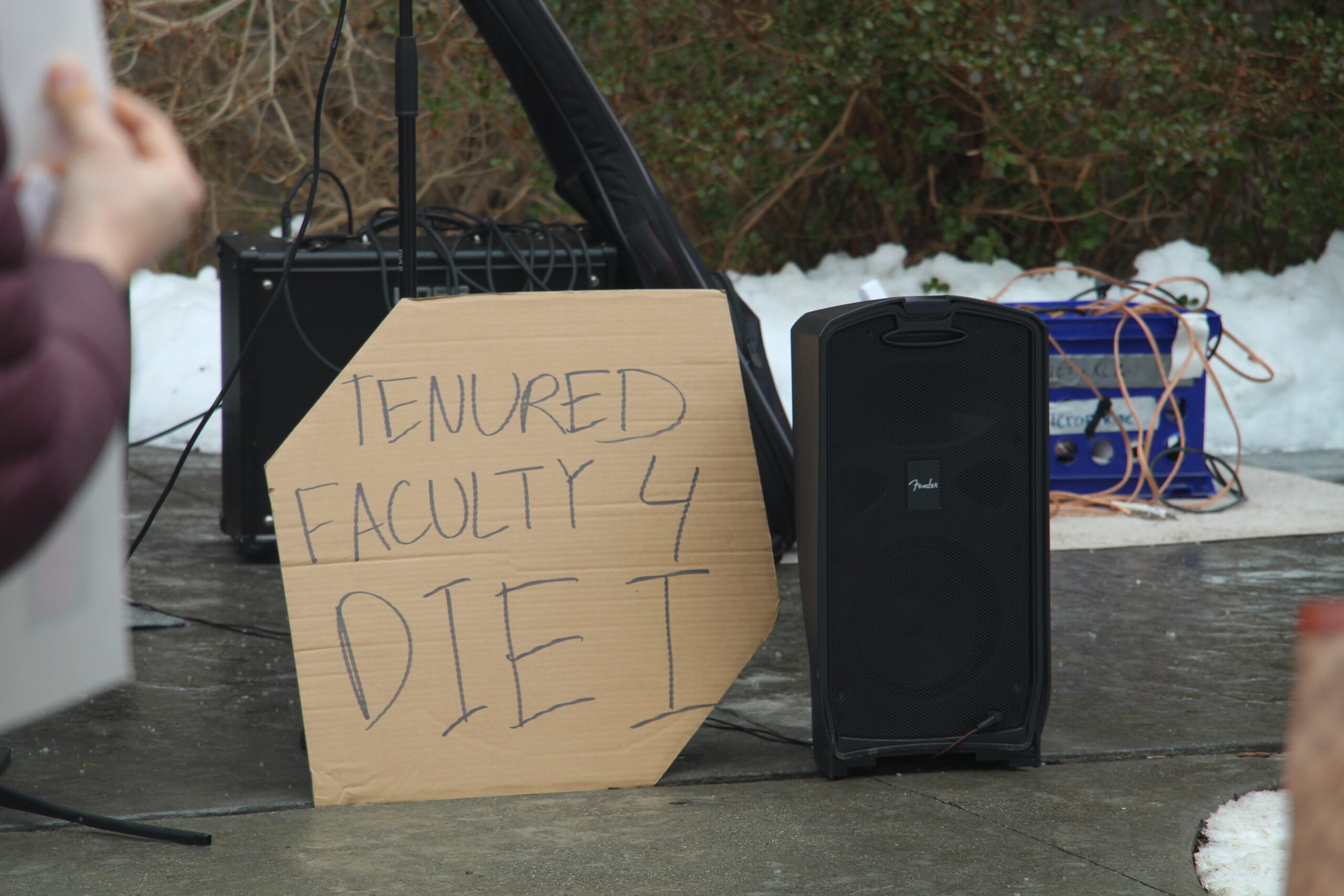Green Book is about color — green, white, and black. Green is in reference to the travel pamphlet used by Black Americans during the Jim Crow era, while black and white define the American racial binary explored in this movie.
The film, screened in Evans Hall in Cummings on Feb 8, won a Golden Globe for best comedy or musical and the Producers Guild of America’s top film prize, putting the film on track for best picture at the 2019 Oscars. Green Book recounts the true events of pianist Doctor Don Shirley’s (played by Mahershala Ali) concert tour in the deep South in 1962. Shirley, knowing he will need protection as he embarks on a two-month road trip during the Civil Rights and Jim Crow era, hires Vallelonga “Lip” Vallelonga (played by Viggo Mortensen) to be his chauffeur. The unlikely duo embark on a road trip during which they learn about each other, themselves, and the hateful world they live in. Through the eyes of writers Peter Farrelly and Nick Vallelonga (son of the real Vallelonga Lip), Green Book brings the audience on a humorous, yet serious journey through American identities in the sixties.
The opening sequence of the film follows Vallelonga going through his day (perhaps “night” is the more appropriate term) as he finishes his shift at a nightclub, returning just as his family is waking up. So far we have gathered that Vallelonga is a family man, bringing in money for his wife and two sons. He also happens to be an Italian living in the Bronx, which reminds me of the Italian/African-American tension in Spike Lee’s 1989 film Do the Right Thing. This tension is made evident when Vallelonga returns home from a shift to find several male friends sitting on the couch watching baseball keeping Vallelonga’s wife Dolores (played by Linda Cardellini) company as two Black repairmen fix an appliance in the kitchen. Although the TV is small and fuzzy, it appears that the four white men were cheering on the New York Mets, specifically Joe Christopher, Choo-Choo Coleman, Sammy Drake, Al Jackson, Sherman Jones, Félix Mantilla, and Charlie Neal. Ironically they’re rooting for Black Mets players while not trusting the Black men fixing their friend’s kitchen. The director cuts to the two repairmen drinking a cold drink Dolores has offered them and then back to Vallelonga’s face as he watches the Black men sip from his cups. Vallelonga proceeds into the kitchen after the repairmen have left and places these two glasses into the trash can. Dolores finds the glasses after dinner and takes them out of the garbage with a look of disappointment on her face.
Green Book is filled with microaggressions towards African-Americans. During the road trip, Vallelonga pulls over to pee on the side of the road, which is in stark contrast to Shirley’s polite, almost haughty mannerisms. The audience laughs at Vallelonga’s man-in-the-wild persona, but gasps when he reaches for his wallet before leaving, obviously an indicator of the racist urges he still harbors. As the movie continues, Vallelonga stops committing microaggressions and is instead able to see the outright racism Shirley must face each day. During a stop in some southern state, Vallelonga and Shirley go into a men’s clothing store so Shirely can try on a suit. I immediately recalled Pretty Women as Shirley enters the store and asks to try on the suit, only to discover that he could not before purchasing it, according to the blatantly racist salesperson. Vallelonga is appalled by this response, while Shirley simply walks away familiar with being treated as the “other.” And in another scene, during a break in a performance at an estate, Shirley heads to use the bathroom only to be told by the host that he needs to use the outhouse in the backyard. Such a scene is the epitome of irony in the movie — here is a stellar piano player, recognized by President Kennedy himself, told to do his business in a wooden shack. Later, two cops pull the men over on the highway. Vallelonga, who has somewhat of an uncontrolled temper, punches one of the cops when he calls Vallelonga “half a n-word,” due to his Italian background. Instead of just bringing in Vallelonga, the cops bring Shirley to the station as well. These microaggressions turn to outright racism when Shirley is not allowed to sit in a club’s restaurant due to its policy and Vallelonga proceeds to use “The Negro Travelers’ Green Book,” a travel guide which lists all of the hotels that a Black person may stay in during their travels through the U.S.
Although the film has been advertised as providing a progressive commentary on racism, it has come under fire from racial justice advocates. Sona Rao addresses some of these criticisms in her article for The Washington Post “How ‘Green Book’ became this year’s polarizing awards contender.” Some feel the film “whitewashes a black experience by using the historic Negro Motorist Green Book, which existed to help Black people protect themselves while traveling in the South, as a ‘mere prop.’” Although many find Green Book problematic for whitewashing an African American experience by telling the story though Vallelonga’s perspective, I couldn’t help but think about how this film shows the evolution of Hollywood. Three years ago, Damien Chazelle’s La La Land met a similar response in that the film whitewashed the jazz scene; on some level Green Book corrects this. In The Boston Globe, film critic Ty Burr explains in his article “Going for a different sort of ride in civil rights-era South,” that Green Book is “a movie built to flatter white audiences, who are meant to feel wiser and more evolved than Vallelonga even as they share his front-seat vantage point and cheer his evolution. That said, there’s a whole other movie to be made about the view from the back of the car.”
Even though there are obvious race and class divisions between the two protagonists from the start, a bond grows between the two men. Vallelonga saves Shirley from being brutally beaten by three men at a bar and helps Shirley avoid being arrested by cops for being caught in a relationship with a white male at a YMCA pool. These actions do show Vallelonga’s evolving friendship with Shirley that exceeds his obligations as Shirley’s bodyguard. Yet, the portrayal of a white man “saving” a Black man is problematic.
The film portrays the communion between Vallelonga and Shirley through food–scenes that reveal the challenges of capturing interracial friendship on screen. Vallelonga, the classic Italian that he is, is constantly eating sandwiches, pizza, and pasta. When the duo enters Kentucky, Vallelonga pulls over to buy some fried chicken which he forces Shirley to eat, stunned that he has never had fried chicken before. This moment, although problematic as well as fried chicken has been stereotypically associated with Black communities, is the first moment of food communion between the two men. Unfortunately, the sentiment is lost when one of the venues Shirley performs at serves a “special” dinner for him: fried chicken and corn on the cob.
At this point, I am utilizing literary techniques from Thomas C. Foster’s non-fiction novel, How to Read Literature Like a Professor. Foster explains that rain is a form of baptism and rebirth. And, what do you know, there is a rain scene in Green Book! Vallelonga and Shirley get into a fight and Shirley demands that Vallelonga pulls the car over. The fight continues as Shirley screams about what has been consuming his mind his whole life — not being accepted by white society for his skin color and not being accepted by Black society because of his economic standing and cultured background. This is the reason Shirley drinks a whole bottle of wine each night — to deal with the depression of not knowing where he fits in society.
Although African-American identity is the major focus of the film, other marginalized identities are represented as well. For example, Shirley’s butler is Indian and there are a few Asian male characters pictured in the film either behind the counter or filling a bleek job. The cello player in Shirley’s band is Russian and there are verbal exchanges between the men in Russian, as there are in Italian. The “other” takes on the role of servant — with the exceptions of Doctor Shirley. Shirley’s rise in society haunts him, as suggested when Vallelonga pulls over to fix the car in front of a plantation still being tilled by male and female Black workers. It is also important to mention the Italian-American identity, because Italian immigrants were not always accepted into American society when they arrived in Ellis Island, however easily assimilated as white Americans.
While not without its flaws, Green Book features poignant metaphors and strong acting that will make it an award contender. The piano emerges as a central backdrop to the story that resonates with musicians and nonmusicians alike. I myself trekked to piano lessons each week for eight-years, but I never really understood the beauty of this massive instrument. A piano is composed of black and white keys, creating melodious music to the ears of an audience, wherever and whoever they are. Shirley’s instrument becomes a metaphor for hope — despite our differences, humans come together through music. •










